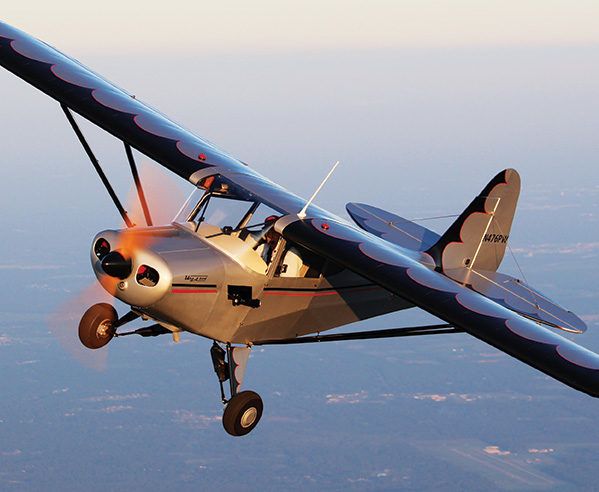 Diogenes of Sinope was a Greek philosopher best known for wandering the streets with a lantern in broad daylight. When asked why, he responded, “I am looking for an honest man.” He thought excess possessions to be incompatible with happiness, and considered those who deemed them important to be fundamentally dishonest…with themselves. Although old Diogenes may have carried his philosophy to extremes (legend says he lived in a large clay pot and often went naked), he would have made a great airplane designer.
Diogenes of Sinope was a Greek philosopher best known for wandering the streets with a lantern in broad daylight. When asked why, he responded, “I am looking for an honest man.” He thought excess possessions to be incompatible with happiness, and considered those who deemed them important to be fundamentally dishonest…with themselves. Although old Diogenes may have carried his philosophy to extremes (legend says he lived in a large clay pot and often went naked), he would have made a great airplane designer.
Airplanes start on a clean drawing board. Performance goals are set, weight is strictly budgeted, and the work proceeds with ascetic virtue. The engineers work quietly, nodding and smiling at the shaving of ounces. All is well until they present the design to the marketing guy, who sends it back with a note listing the neglected luxuries. Too often, meetings are held, memos are written, and a compromise is reached. The design gains a few pounds, and a few dollars. No one will notice…wink, wink.
Enter the builders. Too often they want more—much more—and snap up the latest must-have gadgets until the project grinds to a halt under the sheer weight of product integration. Even if finished, the airplane is too often like a bad ex-wife: overweight, costly, and not flown very much.
A Practical Man
Diogenes would have liked Ray Hill. A veteran A&P/IA, Ray has spent his share of time installing, servicing, and sometimes quietly cursing the must-haves his clients couldn’t do without. Not surprisingly, he likes his spare-time airplanes simple and easy to keep. Hill’s first homebuilt was a KR2, flown in 1983, followed by a Rose Parakeet biplane. Readers familiar with the designs know neither offers an excess of anything but fun. After 280 hours, the KR2 was donated to the Southern Museum of Flight (it’s hanging from the ceiling today), and the Parakeet was sold, unfinished. A new project had captured Hill’s imagination, the just-released Van’s RV-6.
Ray worked five years part-time on his -6, and flew it in 1993. It too was simple and light, with a carbed O-360, wood prop, and basic panel, just as Van intended. It gained Ray a lot of admirers, and he quickly found that RV inspection and repair dovetailed nicely with his Bonanza work.
Hill loved the RV-6, but Father Time plays no favorites. When the new Sport Pilot regulations were introduced in 2004, he looked into the future and thought about a replacement for the -6. It had to be Sport legal, affordable, durable, and made of traditional aircraft materials. It also needed to be inexpensive, as he was in no rush to sell the RV. He settled on a Wag-Aero Wag-A-Bond, ordered the plans, and started cutting tubes.
The Short Wing, Revised
Everyone expected an aviation boom when WW-II ended, and for a very short time, they got one. Piper built 7800 airplanes in 1946, before a steel strike and the release of cheap war surplus aircraft killed the market. In 1947, sales dropped by half, the company lost big money, and the pressure was on for something fresh. The result was the PA-15 Vagabond, a very basic design with side-by-side seating. To keep costs down, the PA-15 shared as many J-3 Cub components as possible, notably the tail, landing gear, and wing. Well, not quite the whole wing; although it used the same ribs and other parts, Vagabond wings were shortened at the root. The Cub’s full-length ailerons were retained, giving the new “short-wing” PA-15 a reputation for “snappy handling.”
Designed with the goal of returning the company to profitability, the bare-bones PA-15 had a single set of controls on the left side, and a single door on the right. The unsprung landing gear had no bungees. It didn’t have a baggage compartment, or even a fuselage paint stripe. What the Vagabond did have was a low price ($1,990), and through 1948 it sold well enough to save Piper from bankruptcy. As the market recovered, the company quickly introduced the PA-17 Vagabond Trainer, with dual controls and bungee gear to satisfy instructors, then dropped both Vagabonds in 1949 to concentrate on new four-place short-wing models.
Fast forward to the 1960s. An airline pilot named Dick Wagner started making and selling Luscombe inspection covers from his basement in Lyons, Wisconsin. Pretty soon he was making STC parts for other airframes, notably the Piper J-3. The business, by then known as Wag-Aero (see related story on page 36), grew so much that he tried to buy the rights to the J-3, figuring he should just build the whole airplane. Piper wasn’t selling, so in early 1975 Wagner drew up plans for a look-alike he first called the “CUBy Sport Trainer.” It wasn’t an exact J-3 copy, although it did incorporate a huge quantity of the standard J-3 parts manufactured by another Wagner business, Aero Fabricators. Intended as a kit homebuilt, the notable changes were the use of 4130 tubing for the entire fuselage (J-3s used 1020 steel in low stress areas because Mr. Piper was frugal) and wood spar wings with built-up stick spruce ribs. There were lots of little changes, too: wing tanks, heavier tubing in the nose to allow larger engines, a swing-up left side window rather than the slider, and an elevator trimtab to replace the J-3’s expensive stabilizer jackscrew. Wagner painted the prototype yellow on one side and bright green on the other, just so it would really stand out when parked in a line of factory Cubs. Homebuilders immediately loved the Sport Trainer, and still do. Wagner quickly followed with a clipped wing version called the Acro Trainer. In 1978, with the Acro Trainer’s short wings in hand, he introduced a PA-15/17 replica he called the Wag-A-Bond. Wag-Aero still supports all three designs today.
Like the original Piper Vagabond, the Wag-A-Bond comes in two versions, the base Classic, and a more customized model called the Traveler. Unlike the Piper, a Wag-A-Bond Traveler has doors on both sides, and wing tanks to replace the big cabin fuel tank. The Traveler’s notable feature is an extended platform behind the seat intended as a sleeping area. The actual baggage compartment is under the platform.
The Art of Old-Fashioned Homebuilding
Ray Hill approached his Wag-A-Bond project in the traditional way—buy material, build a few parts, then buy more material and keep building. He always kept an eye out for useful items and paid cash, a little at a time. At a time when too many pilots feel a new airplane is financially out of reach, Hill reports that his running total came to about $22,000, “…not counting sandpaper and used hardware.”
This Wag-A-Bond took about 10 years total, working in a back room at the airport between customer jobs. The fuselage is scratch-built and gas-welded. Hill elected to go with classic wood wings, so wing construction started with a rib jig and the traditional “rib a day” routine, and eventually progressed to a spar layout on a tabletop. Airplane construction was rudely interrupted once, when a tornado completely destroyed Hill’s home. Thankfully, the Wag-A-Bond, the RV-6, and his A&P business were all at the Prattville, Alabama airport.
Very popular aircraft like the Van’s series created a huge demand for used 320 and 360 series Lycomings. The Wag-A-Bond avoids all that, as the engine of choice is a Lycoming O-235 straight off the front of a Cessna 152. Hill’s O-235 came from a 1979 model. He rebuilt it himself, of course. Wheels and brakes are from a C-172, again readily available in the used market, and easily overhauled.
The widespread acceptance of glass panels has made overhauled old-school instruments quite affordable. Hill went so far as to install a vacuum pump and gyro horizon, always handy on a bad day. The transponder is a used King KT76. The Garmin 196 GPS was a gift from a friend, although Hill had to buy a panel dock to mount it. Bits like circuit breakers came from Hill’s used parts collection. His favorite find was the tailwheel assembly. It turned up in the SERFI (Southeast Regional Fly-in) flea market with a $10 price tag. It’s not full swivel, but it is simple and lightweight, two things Hill likes very much.
How much? Well, study the pictures and you’ll see that Hill elected to pass on extras like leather, carpets, headliners, and interior fabric. There is no autopilot, no wheelpants, and no dual anything except basic controls. Hill wanted a true Sport Pilot legal airplane (1320 pounds gross weight), and he got it; N476PW weighed in at 848 pounds. Full fuel (26 gallons, 156 pounds, 3+ hours) allows a reasonable 316 pounds for pilot and passenger. Alternately, the airplane can be loaded with a pair of 200-pound pilots and 12 gallons of gas, enough for a pleasant one-hour evening flight with plenty of reserve. Remember, this is a Traveler; a Wag-A-Bond Classic can be even lighter. It’s also worth noting that Dick Wagner actually designed the airplane with a gross weight of 1450 pounds. Although placarded at 1320, misjudging passenger weight is not going to break the airplane.
How Does It Fly?
Like a Cub, of course. Hill and I saddled up for a short flight prior to our photo session. Ray is normal sized, while I’m well over 6 feet tall and 200 pounds. I just don’t fit well in many classic airplanes, but nothing was a problem with the Wag-A-Bond. Shoulder room seemed a little better than a C-152. Hip room and legroom were much better. My knees easily cleared the panel, and I could stay out of the way and off the pedals when Hill was flying. There was plenty of space for my size 13 shoes.
Engine operation is entirely conventional, no surprise with a carbed O-235. Taxi is also conventional. Some written accounts of the ground handling manners of short-wing Pipers suggest the runway experience can be tricky, but there was no evidence of it with Hill’s airplane. Just add power, track centerline with light rudder pressure, raise the tail a bit, and let it fly off when it’s ready.
I didn’t time the climb rate, but it was easily as good as a C-152, and far better than a classic 65-hp J-3 under the same conditions. Backing off the throttle settled into cruise at about 90 mph. Upright visibility was reasonable, and the Wag-A-Bond has a full skylight for steep turns.
Pitch pressures were moderate, with good trim speed feedback, always desirable. Roll response is nothing like the “snappy” descriptions in the old literature. Long-wing Cubs roll at something like 30 degrees a second maximum, which is very slow. That was the yardstick when the PA15/17 was introduced, so yes, the Wag-A-Bond’s roll rate seems snappy when compared to a Cub. However, when compared to modern pushrod designs, the friction found in cable-operated ailerons makes the stick feel like it is stuck in wet cement. Fear not; the required forces are fine for typical cruise flight deflections. Just expect to use two hands for maximum- effort rolling. You’ll also need two feet, like most early designs. Fail to accompany aileron input with a poke at the correct pedal, and you’ll quickly understand the meaning of “adverse yaw.” It’s not a bad thing. More than a few old-time instructors feel the early Piper designs are the best ever for teaching students how to fly in all three axis.
The stall was a non-event. When forced, the break was straight ahead, and recovery needed nothing more than a release of backpressure. If I snuck into the stall with power off, the airplane would settle into a mush with some slight bobbing, and could be held there easily with just a little rudder work.
Hill suggested 70 mph for the pattern, slowing to the usual 50-55 over the threshold. He said he almost always uses a three-point, so naturally I had to try a wheel landing. It seemed a little easier to start a hop (as compared to a Cub), but there was nothing unusual about it, and the airplane had excellent tracking and rudder response when back on the roll. Ray showed me a typical short-field three-point, easing across the paved runway threshold at less than 50, contacting tailwheel first, and stopping with only very light braking in less than 500 feet.
Want One?
All in all, Ray Hill’s Wag-A-Bond is a marvelous example of what is possible, Diogenes-style. With sweat equity and a little discipline, a builder can create a sensible, practical airplane with good performance. Because it is handmade, builders can take pride in craftsmanship, not checkbook one-upmanship. There is also zero risk of the design going unsupported. Even if Wag-Aero disappeared tomorrow (it won’t), everything can be made or bought in the open market.
Best of all, you won’t have to sleep in a clay pot to afford it.


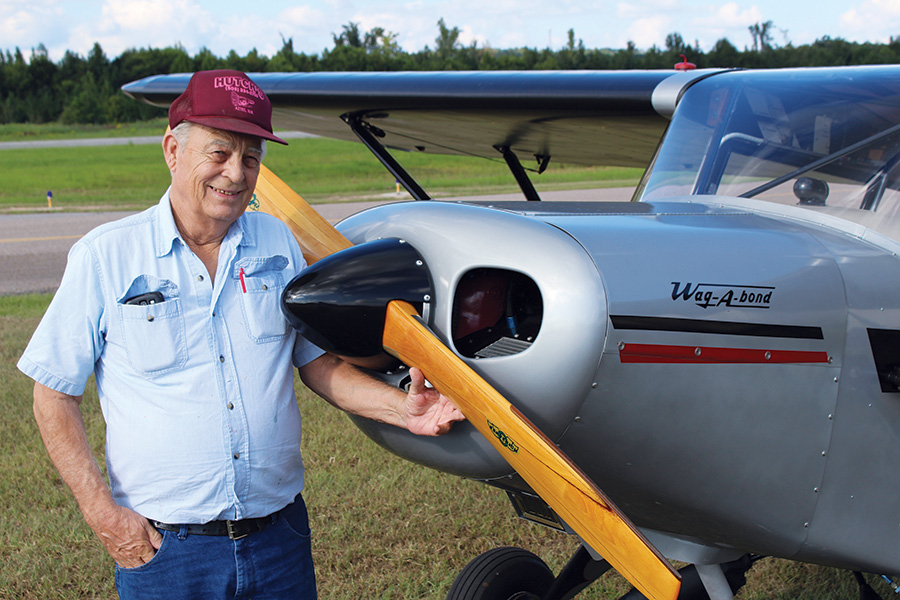


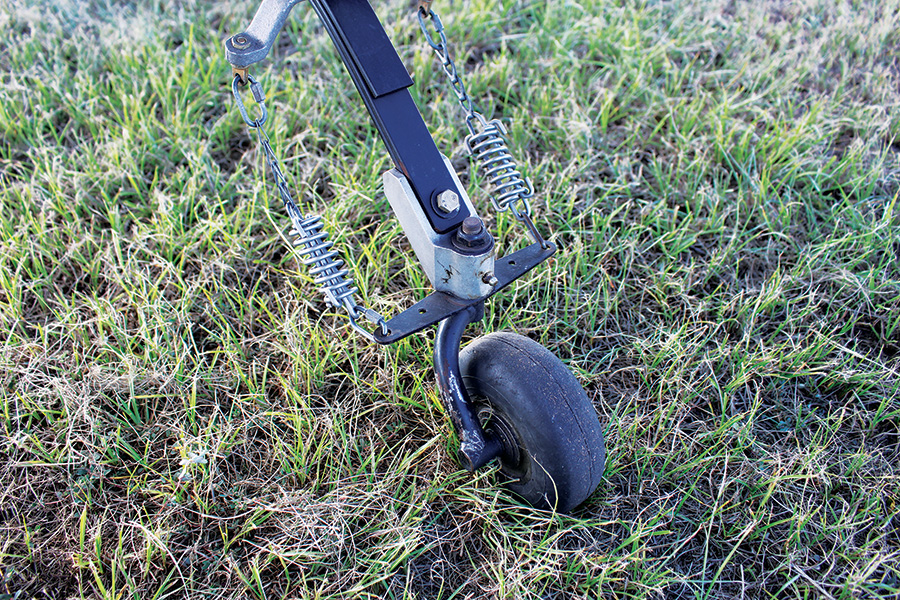
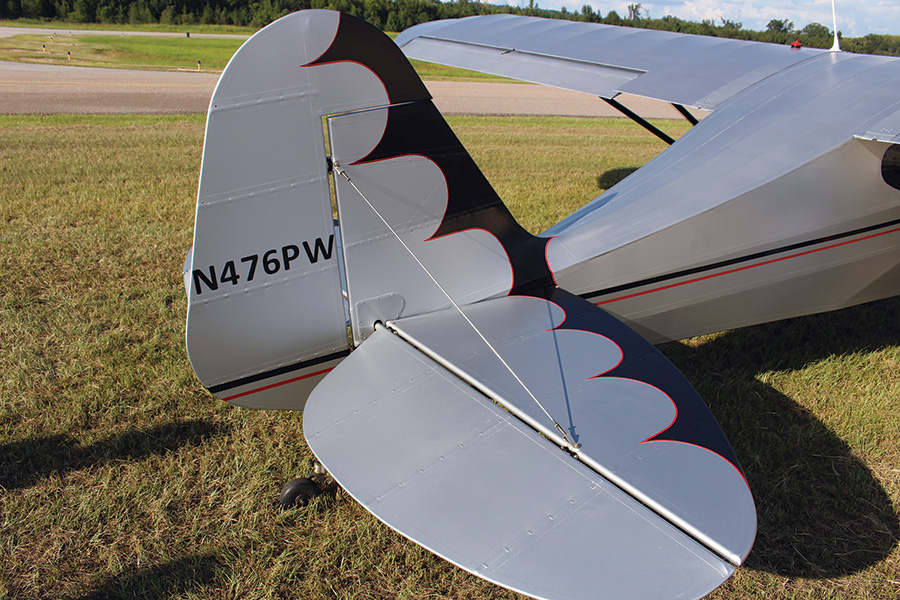
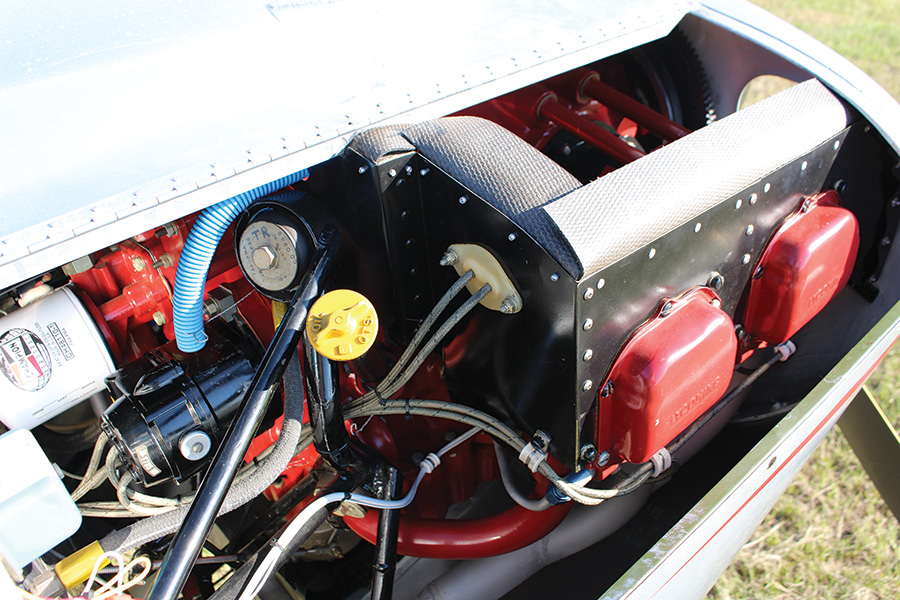
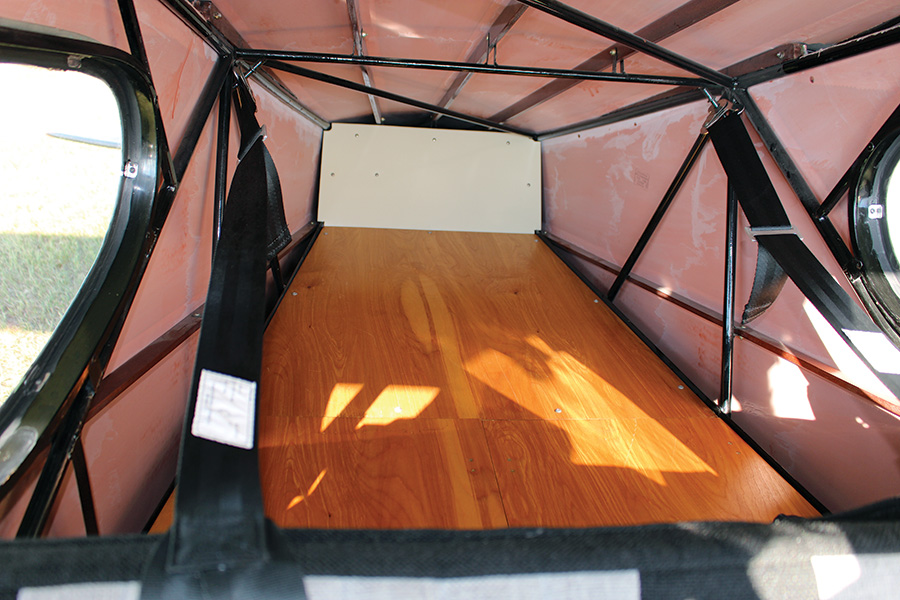

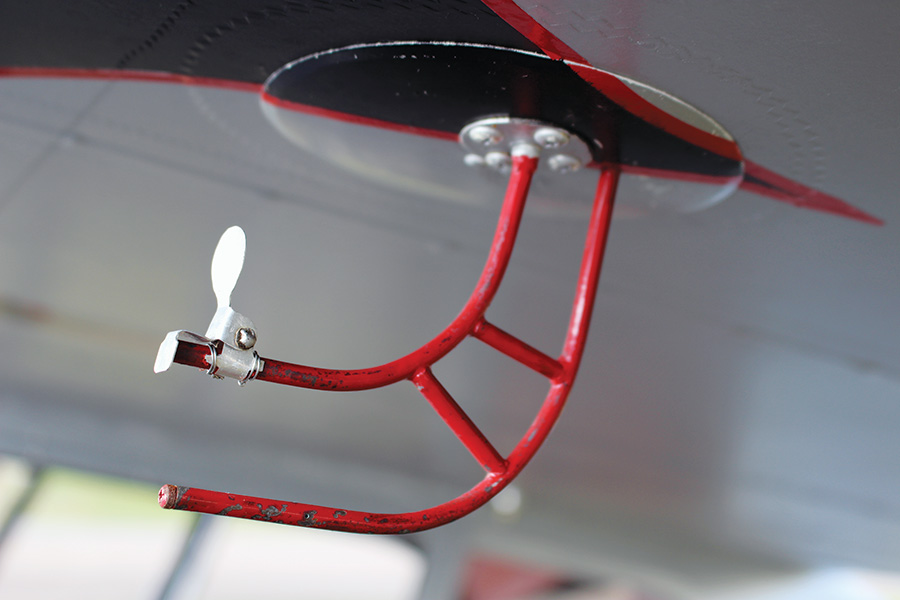
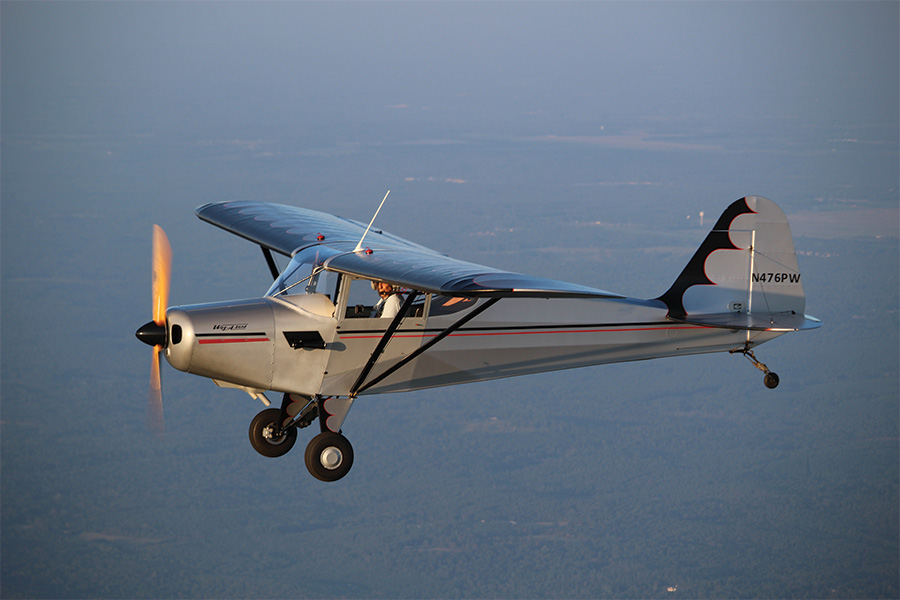
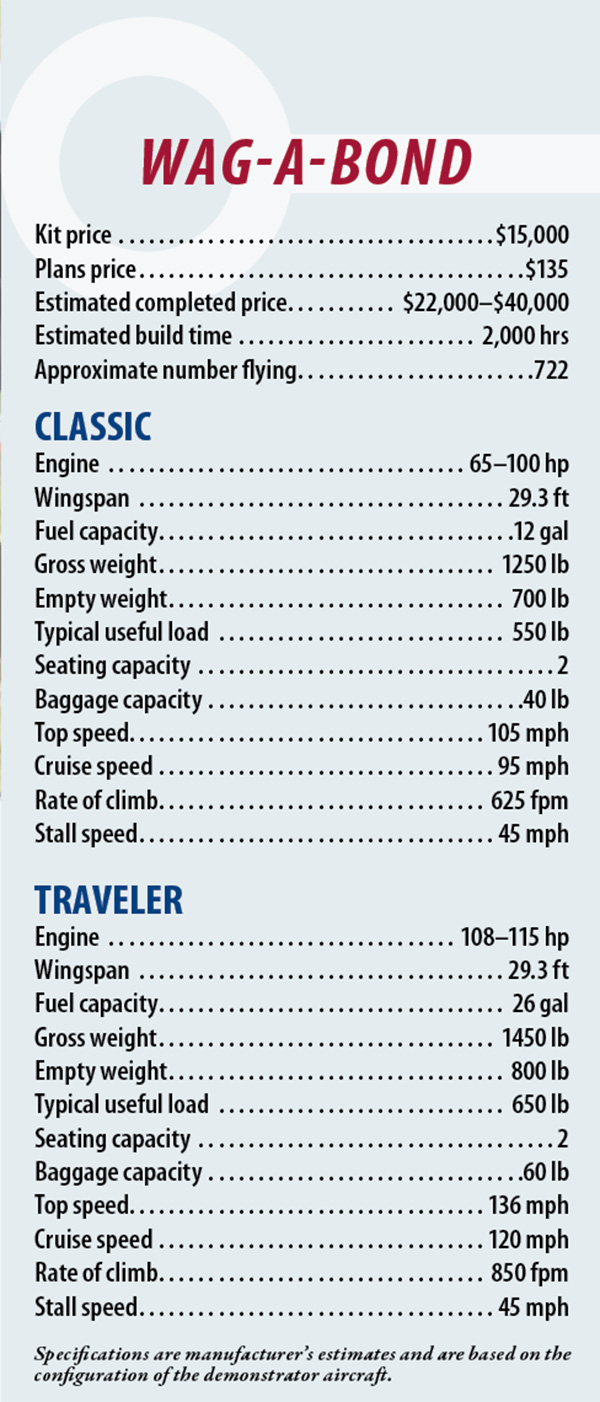
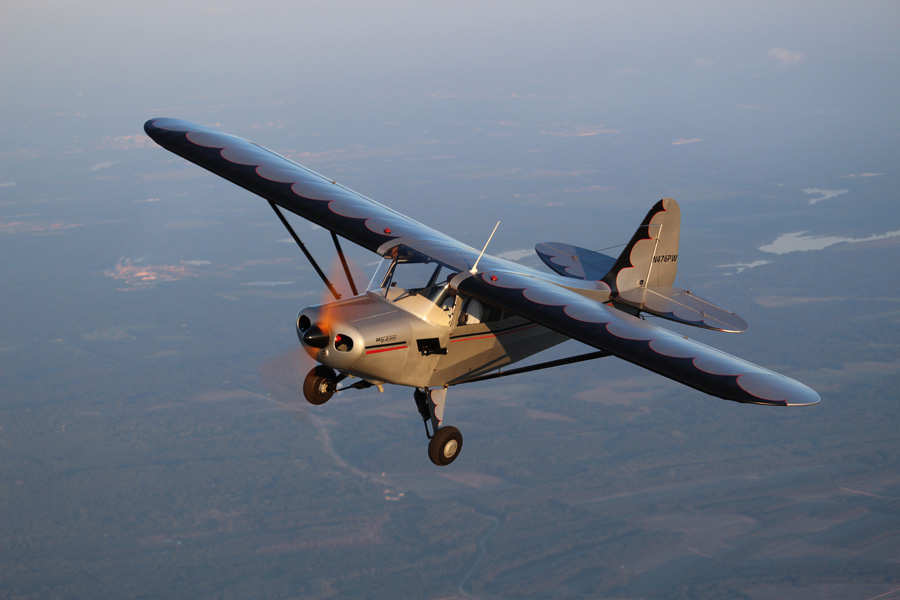
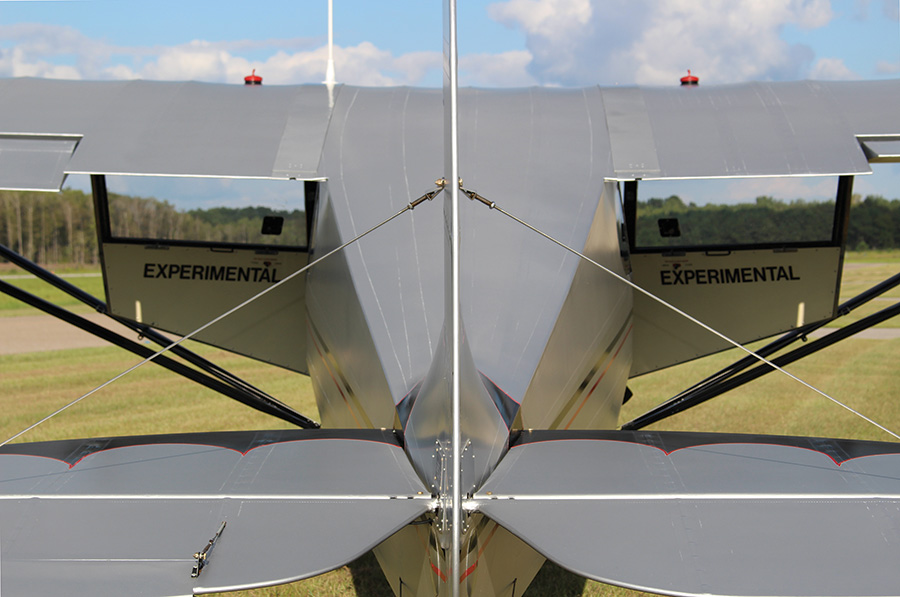




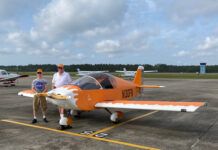
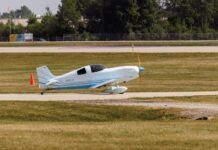
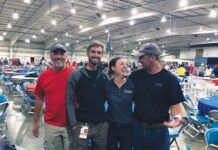

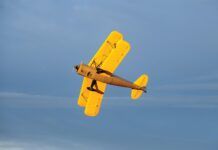
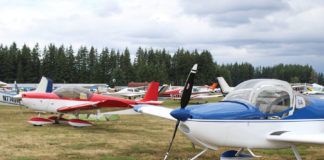
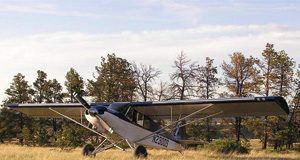
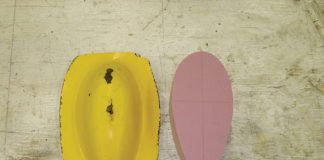
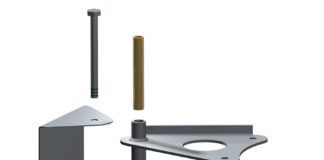
I have a set of plans for my dream Wag-a-bond. Some day soon(hope, hope, hope). I’ll have the place to make dreams come true. Your article makes me want to start today. But first things first.
Thank you for your onsite, and encouragement. The little silver an black Wag-a-bond makes a pretty little bird.
Keep-Em Flying.
I purchased this Wag-A-Bond from Ray Hill in the fall of 2018 and have thoroughly enjoyed the aircraft. Ray’s expertise has been invaluable with condition inspections and upgrading to die spring landing gear. Sadly, Ray passed away earlier this month. His skill, talent, and personable demeanor will be sorely missed.